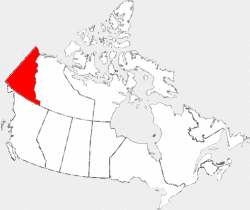 |
| The Tintina Gold Belt goes from northern British Columbia to Alaska for 1,200 kilometers. USGS |
You could say it all began with the Klondike Gold Rush in 1898, but the history of gold in the Yukon goes back to the early traders and trappers who first found gold in the territory. Much of this gold was in placer deposits. Placer is a Spanish word meaning a place where gold was dug from the earth mainly from sand & gravel deposits where the gold was concentrated.
The southwest corner of the Yukon British Columbia Yukon Pacific Ocean just above Anchorage , Alaska Yukon Yukon Klondike in Alaska Yukon
This part of North America escaped the extensive bouts of continental glaciation that covered much of the northern hemisphere for the past million years allowing the placer deposits that had formed for millions of years to remain in place; the placers were destroyed by the glaciers in other parts of northern north America. When the glaciers came a good part of the Yukon Asia to North America when the sea level was four hundred feet lower then it is now.
For many years geologists and prospectors thought the gold in the Yukon
 |
| The Yukon Territories are shown in red. |
Most of the river systems in the Yukon produce placer gold, and lode gold can be found related to intrusions of magma into the country rock. There are plenty of placer operations found in the territory, and an increasing awareness of the lode gold potential of the Yukon
 |
| Gold Panning in Bonanza Creek in the Yukon. Photo by Janothird |

No comments:
Post a Comment